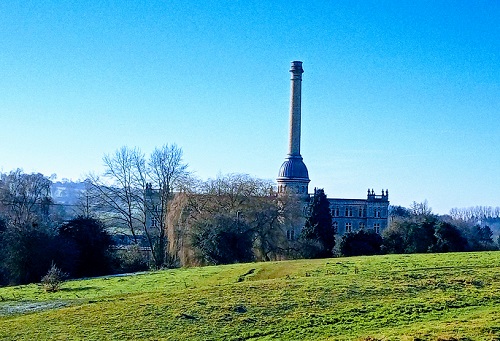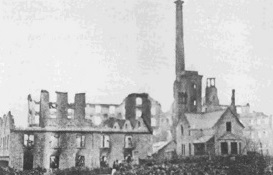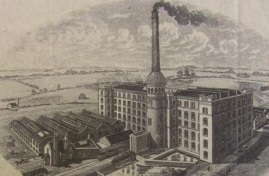This is a complete recording of the late Ralph Mann’s presentation in Shipton Village Hall on February 11th, 1992, under the title “The Rise and Fall of a Cotswold Woollen Mill”.
Ralph Mann was a very popular and well-respected speaker over many years. He had great knowledge of the countryside – walks, wildlife and people, and wrote several books on these subjects. He taught at Chipping Norton, had connections with Kingham and eventually became a vicar near Cheltenham.

His presentation of Bliss Mill is in four main phases, with an impromptu discussion of several slides at the end of the talk. (Sadly, we have so far not traced any copies of these).
The first phase introduces William Bliss II, who was instrumental in developing the Bliss Mills from their early beginnings, and spearheaded many developments in Chipping Norton, including the encouragement of a railway link and station, the establishment of a boys’ and a girls’ school, rebuilding the Baptist Church, and many new houses – turning Chipping Norton into a thriving market town.
Intriguingly, when encouraged to write his memoirs towards the end of his life, we learn that William had some difficulties in doing this. Some reasons for this are covered in the third phase of Ralph Mann’s talk.
Thomas Bliss – 1756
The second phase describes the arrival in approximately 1756 of William’s Grandfather Thomas Bliss, fresh from his completed apprenticeship in the wool industry in Gloucestershire where his family were mill owners involved in the fulling industry and clothmaking. This was at the beginning of a period of growth for the industry and it seems likely he was looking for new markets in the Chipping Norton and Moreton-in-Marsh area. Also covered are details of his marriage to a local innkeeper’s daughter, becoming a tenant-landlord of the Swan Inn and taking part in the official life of the town.
However, this phase of Thomas Bliss’ ended in bankruptcy in 1773. Thus, a new turn in his life led him to join with and work closely with the Baptist Church. Perhaps knowing that as a nonconformist, he would not be able to involve himself in any official capacity in the town, he revisited his trade as a clothier.
Much detail around this very active phase of his life is to be found in a large notebook (1784) now in the care of the Oxfordshire County Records Office. The first record of the “Flying Shuttle” is to be found in this book, which also demonstrates how progressive Thomas Bliss was.
However, intriguingly, details of his later family life make him a somewhat mysterious figure.
William Bliss I
The third phase of the talk presents Thomas’ eldest son William Bliss I. He was apprenticed and trained in the woollen industry. It was he who began to develop water milling activity in Chipping Norton in the early 19th Century, eventually leading to the establishment of two such mills in the town.
These steady developments were cast in shadow by William’s deteriorating mantal health which saw him taken to an asylum in Northampton, leaving the business to be looked after by eldest son Robert, and later by the then 4-year-old William Bliss II. It was primarily for this reason that William Bliss II had difficulty in creating a full family history in his memoirs.
William Bliss II
At this time the Bliss milling business was a small, though thriving family concern. When the Radley-educated William Bliss II took over the two mills, possibly reluctantly at first, he them up into a business employing and housing up to 700 workers. He simultaneously transformed the fortunes of the town, as described in the first phase of the talk. In the 1850s, developments around the installation of steam power required the transport of coal, and hence the need for rail connections, were a key element in these changes. This was the Bliss Mill business in its heyday.


Towards the 20th Century
The end of this third phase of the talk describes the 1872 fire and the rebuilding of the lower mill.
The fourth phase describes the mill business under the control of William Bliss III, who lacked the business acumen of his father and failed to deal with the capital repayments following the fire.
Eventually the business was sold and became a limited company, and the family moved to New Zealand. Under the auspices of the banks and a man called A. H. Dustan – we are not given the full name, but it is a name which became commemorated in the town.
This phase of the talk outlines in brief the gradual decline of the business into the 20th Century and ends with some descriptions and some idiosyncrasies of the upper mill.
DB Sept 2023

